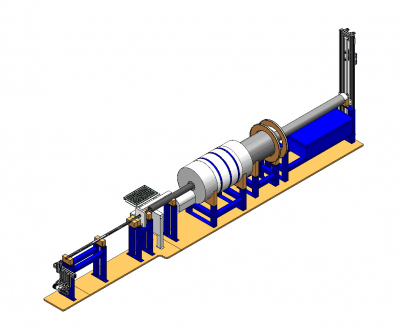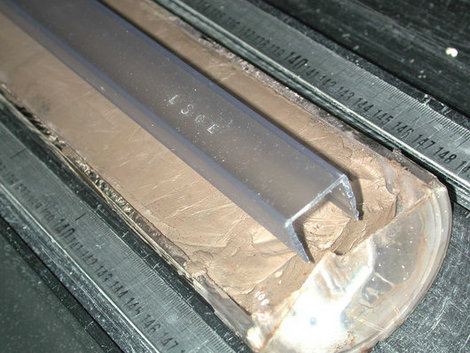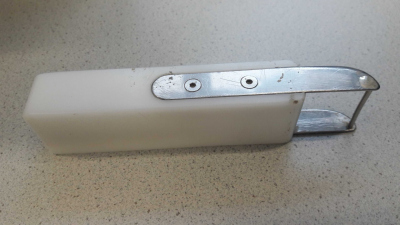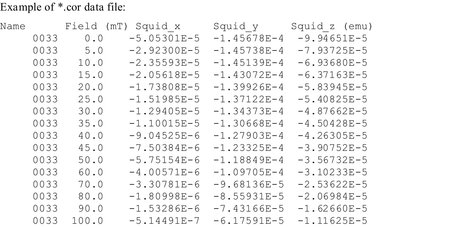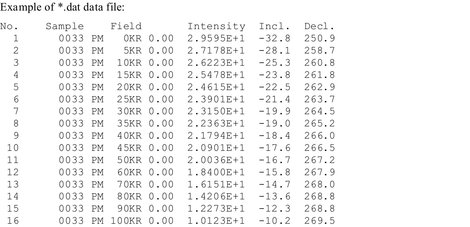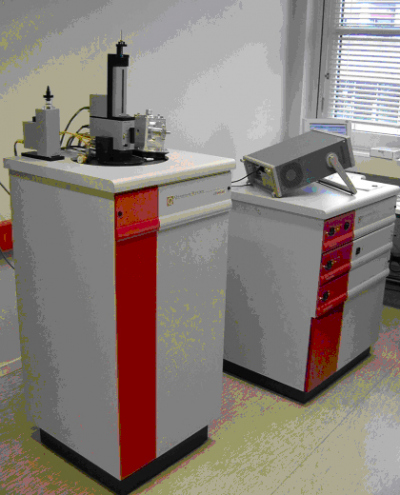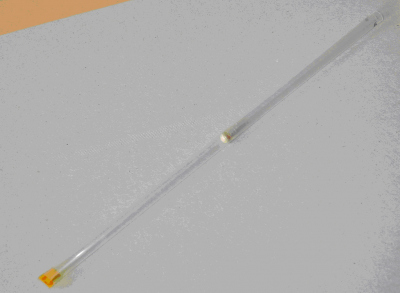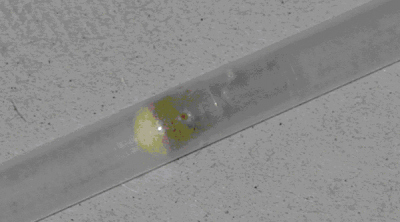Page path:
- IODP at MARUM
- Partner to the ECORD Science Operator
- Onshore Science Party (OSP)
- Core flow and procedures
- Paleomagnetic measurements
Paleomagnetic measurements
2G Enterprises cryogenic rock magnetometer 755 R
The 2G Enterprises Rock Magnetometer 755 R was installed as system no. 67 (755-1.65UC ) at the University of Bremen in June 1997. The instrument determines the natural remanent magnetization of a sample in terms of intensity and direction. This information may provide insight into the history of the Earth’s magnetic field and allow for an estimation of the age of the sample. Synthetic laboratory remanences imparted by the device allow for the characterization of the magnetominerals carrying the magnetic information.
The system is designed to process U-channels with a maximum length of up to 150 cm as well as discrete samples with a volume of up to 10 cm³. It employs dc SQUID sensors with a total magnetic moment noise level of les than 10E-9 emu (10E-12 Am²). When expressed in terms of magnetization, the dc SQUID based rock magnetometer has a noise level of less than 10E-7 A/m for a 10 cm³ volume rock.
In rock magnetometer systems, the SQUID is used to measure current induced in superconducting pickup coils placed at the center of the rock measurement region. There are three sets of of such pickup coils, two for transverse moment measurement and one for axial moment measurement, thus the total magnetic moment is determined at a time.
In rock magnetometer systems, the SQUID is used to measure current induced in superconducting pickup coils placed at the center of the rock measurement region. There are three sets of of such pickup coils, two for transverse moment measurement and one for axial moment measurement, thus the total magnetic moment is determined at a time.
CAD drawing of Bremen 2G cryogenic rock magnetometer
Bremen 2G Enterprises cryogenic rock magnetometer
The Bremen 2G cryogenic rock magnetometer consists of further components such as:
- in-line 3-axes alternating field demagnetizer (peak field 170 and 300 mT)
- DC coil to impart ARM in peak fields of 0.4 mT
- DC pulse coil to impart IRM in peak fields of 800 mT
Modifications to the Bremen 2G cryogenic rock magnetometer are:
- Pneumatic autosampler for discrete samples (NOT applicable for IODP standard sample cubes)
- Additional DC coils to compensate for remaining fields inside the magnetometer
- Temperature monitoring of AF coils
- Replacement of genuine stepper motor by HDY series servo motor (PARKER Automation)
- Replacement of genuine stepper motor by HDY series servo motor (PARKER Automation) combined with compact servo controller COMPAX 1000SL incorporating power stage, control electronics, integral position controller and a direct-on-line- power supply for significantly safer and more accurate positioning
- Customer-developed monitoring and processing software based on National Instruments LabView
- Online presentation of all data and all relevant measurement and system parameters
- Full control by script files to perfom fully automated series of different measurements
- Customer-developed paleomagnetic interpretation software
Sample container
Data output
All measurements are stored as a set of five data files of which only one (or two) are necessary if the measurement was properly completed. These two data files are the *.cor and the *.dat file.
The *.raw file contains the magnetic moment of the samples without any correction given as X, Y, Z components in emu units (analogue to the *.cor file).
The *.bg file contains the data of the background measurement for each (de)magnetization step.
The *.log file is updated every time a data reading is taken by the SQUIDs. This is done in order to provide a backup of the data in case that the measurement is not properly completed. This file allows for generating a *.cor and a *.dat file afterwards.
The *.bg file contains the data of the background measurement for each (de)magnetization step.
The *.log file is updated every time a data reading is taken by the SQUIDs. This is done in order to provide a backup of the data in case that the measurement is not properly completed. This file allows for generating a *.cor and a *.dat file afterwards.
Quantum Design Magnetic property measurement system XL7
The Quantum Design MPMS-XL7 allows for measuring the magnetic properties (such as induced and remanent magnetization, ac susceptibility) of samples in peak fields of ±7 Tesla and at temperatures varying between 1.9 bis 400 K. Absolute sensitivity in a magnetic field of 2.5 T is 1x10E-8 emu. An optional oven increases the maximum temperature to 800 K.
Bremen MPMS XL-7
The maximum sample dimensions are 5 mm in diameter and 9 mm in length. Using the oven reduces the length to 5 mm and the diameter to 1.6 mm. The samples, usually 10 to 20 mg, are filled as dry powder into a gelatine capsule which is then mounted in an ordinary drinking straw. The measurements are rather time-consuming and may easily take several hours or a day per sample.



